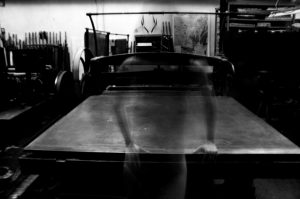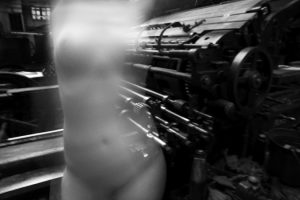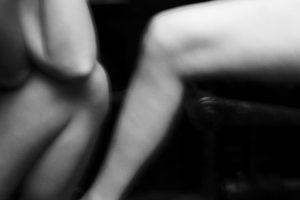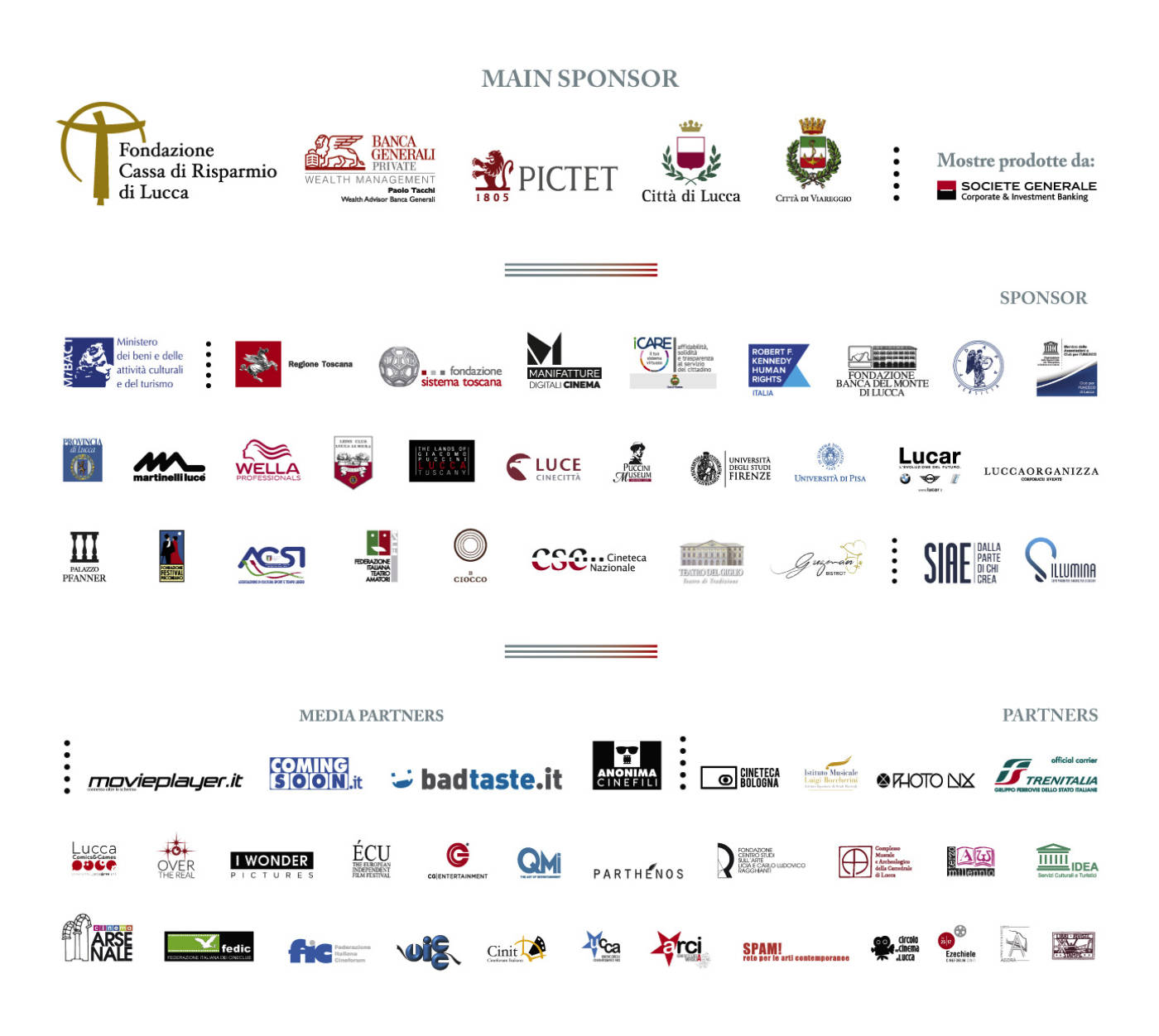Photos and Lithographs
 From the 23rd August to the 14th September at the Palazzo Panichi in Pietrasanta there will be an exhibition dedicated to David Lynch’s unpublished work, as part of the event commemorating the 450th anniversary of Michelangelo Buonarroti’s death, and also as a part of the extensive homage paid to Lynch at the Lucca Film Festival 2014, where he is an honorary guest. This year the Festival is the main event financed by the Cassa di Risparmio di Lucca foundation. Palazzo Panichi hosts Lynch’s surreal and unsettling visions that made his name in film-making worldwide, with memorable works such as Eraserhead, The Elephant Man, Blue Velvet, Wild at Heart, Lost Highway.
From the 23rd August to the 14th September at the Palazzo Panichi in Pietrasanta there will be an exhibition dedicated to David Lynch’s unpublished work, as part of the event commemorating the 450th anniversary of Michelangelo Buonarroti’s death, and also as a part of the extensive homage paid to Lynch at the Lucca Film Festival 2014, where he is an honorary guest. This year the Festival is the main event financed by the Cassa di Risparmio di Lucca foundation. Palazzo Panichi hosts Lynch’s surreal and unsettling visions that made his name in film-making worldwide, with memorable works such as Eraserhead, The Elephant Man, Blue Velvet, Wild at Heart, Lost Highway.
His encyclopedic genius, ranging through the arts from film to TV directing, comic strips to fashion design, painting and sculpture to photography and lithographs, makes him worthy of comparison with Buonarroti’s various talents.
The american director’s recurring visions and themes are at the heart of the exhibition in Pietrasanta, expressed through photographs and litographs: a series of 17 works entitled “Women and Machines”, created in 2013 in the Idem atelier, where he also created a series of lithographs from 2007 onwards. Since discovering the ancient art of lithography, Lynch has created over 200 works, and paid homage to this art thorugh a video (shown at the exhibition) dedicated to the atelier, a legendary place founded in 1880 that has seen some of the biggest artists of the XX century: Picasso, Giacometti, Matisse, Cocteau, Chagalle, Dabuffet and Braque for example.
 Lynch’s work can be defined as “polygraphic”, a love for fine art that accompanied his film making and could express experimentations that were not possible on the big screen.
Lynch’s work can be defined as “polygraphic”, a love for fine art that accompanied his film making and could express experimentations that were not possible on the big screen.
Among his talents are comic strip artist (his most famous series being “The Angriest Dog in the World”, pubblished between 1983 and 2003 on various publications for example the L.A. Reader, Creative Loafing, New York Press), a writer (“Welcome to Twin Peaks is just one of his works, created with Mark Frost and Richard Saul Wurman), a musician, composer and singer (his first album is “Crazy Clown Time” from 2011 and in 2013 his second “The Big Dream”, in which he covers “The Ballad of Hollis Brown” by Bob Dylan and features the swedish singer Lykke Li), a painter (he admits to being inspired by Francis Bacon, as is evident in the “Air is on Fire” exhibition, hosted by the Foundation Cartier in Paris in 2007, which saw art pieces drawn and painted onto paper napkins, match boxes and traditional canvases). His polygraphic talents don’t stop here: Lynch has also experimented with installations, directed music videos (for example Moby’s “Shot in the Back of the Head”, his own “Crazy Clown Time”, and recently dor Nine Inch Nails), commercials (Playstation, Armani, Gucci and Dior), theatre performances (Industrial Symphony n°1: The Dream of Broken Hearted), interior design (he designed the whole interiors for the “Silencio” club in Paris, clearly inspired by Twin Peaks), set design (a talent inherited from his father who was a carpenter. Many pieces of furniture used on his sets were made by himself), fashion design (he’s worked with Christian Laboutin, suggesting a totem sculptured style, also seen in his “Fetish” exhibition in 2007).
Photography has accompanied Lynch’s evolution ever since 1980 when he bought his first camera (a Canon Eos 1) just before starting the filming for Elephant Man.
 In the past few years Lynch’s photography has detatched itself from his films gaining it’s own independence as we can see from his latest exhibitions: “The Factory Photographs” at The Photographers Gallery in London and “Small Stories” at the Maison Europèen de la Photographie in Paris.
In the past few years Lynch’s photography has detatched itself from his films gaining it’s own independence as we can see from his latest exhibitions: “The Factory Photographs” at The Photographers Gallery in London and “Small Stories” at the Maison Europèen de la Photographie in Paris.
This exhibition in Pietrasanta is a worldwide preview, and contains two recurring themes typical of Lynch’s work: the female figure with her evocative, fascinating and creative power, alongside machinery, seen as creation and destruction. The highlights of his work on the big screen are all present in this exhibition: demonic but also romantic motifs, from physical abnormality to uncommunicative relationships, from unstoppable ambitious love to deadly passion, home as a shelter or a place of perverse and terrible events, machinery as a way of creating and dreaming.
Project by: Fondazione Centro Arti Visive in collaborazione con Fondazione Cassa di Risparmio di Lucca e Lucca Film Festival
Created by: Alessandro Romanini
Film manager: Nicola Borrelli
Museum project manager: Franco Pucccetti
Project supervisor: Fabiola Manfredi
Graphic manager: Marco Baudinelli
In collaboration with: Comune di Pietrasanta, Comune di Lucca
Main Sponsor: Cassa di Risparmio di Lucca, Pisa, Pistoia
Sponsors: Asia World, Artlab, Le Cuirs Fournier
Where to find us: Palazzo Panichi, Piazza Duomo, Pietrasanta.
Period: 23rd August – 15th September
Times: Tuesday – Sunday: 18:00-24:00 (closed: Monday)
Free Entry


